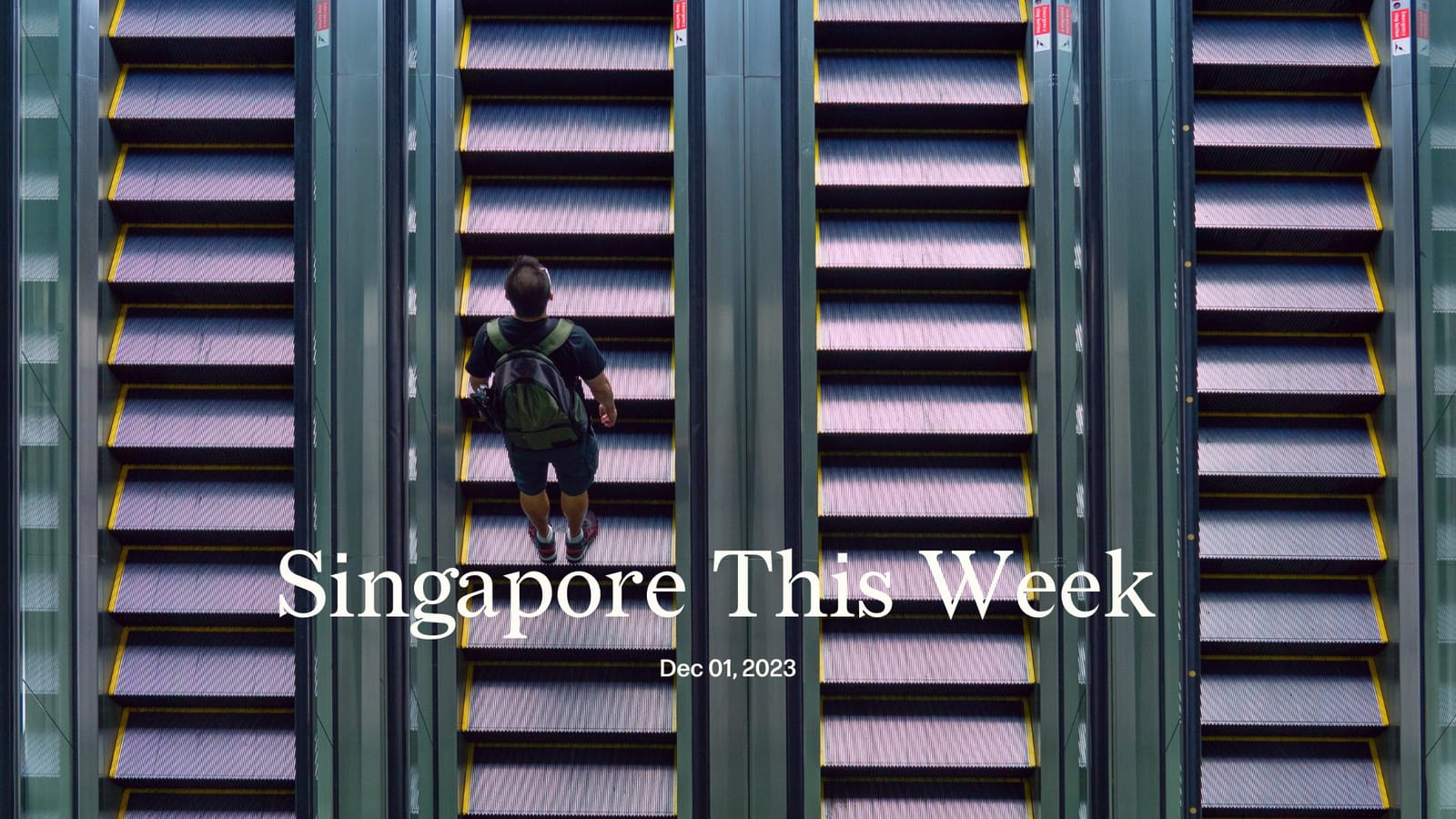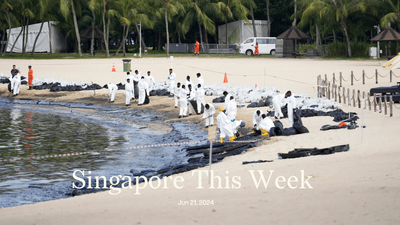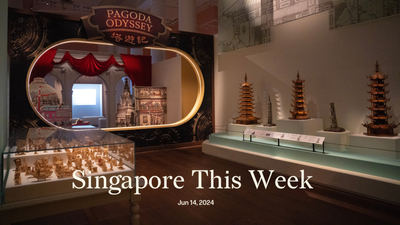Politics: Two town councils must fork out, as WP awarded costs for appeals
This week, the Workers’ Party (WP) notched an important victory in its long-running case involving the management of the Aljunied-Hougang Town Council (AHTC) and the Sengkang Town Council (STC). In 2011, the WP won the Aljunied Group Representation Constituency (GRC), the first time in history the ruling People’s Action Party (PAP) has lost a multi-seat district. The WP then switched town council managing agents from CPG Facilities Management, which it believed was aligned with the PAP, to FM Solutions and Services (FMSS), newly set up by How Weng Fan and her late husband Danny Loh, who’d been assisting the WP on the ground. These shifts essentially set the scene for a multi-year tussle—explained by CNA in detail here—over whether three WP leaders, Pritam Singh, Sylvia Lim and Low Thia Khiang, had acted improperly, including in terms of the alleged misuse of funds and the alleged failure to set up proper payment controls. Parallel suits were initiated by two town councils—an independent panel appointed by AHTC; and Pasir Ris-Punggol Town Council, which later handed it over to STC—against eight defendants, including the WP politicians and FMSS employees. In November 2022 and July this year, the Court of Appeal cleared them of most, but not all, of the High Court’s 2019 findings against them. And this week, noting that the councillors were “successful in overturning the outcome reached in the court below on the majority of the issues”, the Court of Appeal ordered AHTC and STC to cover appeal costs and disbursements of around S$388,800. (And in doing so, it agreed with the WP leaders that their use of more than two lawyers to fight the appeals was warranted.) Lim, Low, and Singh are still liable for alleged negligence in terms of payment controls, which created a risk of improper payments, one of the Court’s findings. But they’ll be encouraged by this week’s news.
Society: Wait Long Long
By 2100, in an extreme climate scenario, sea levels could rise by as much as 1.3-1.6m, and some 2bn people could become climate refugees, many of them in South-east Asia. But don’t you worry, Singaporeans. The PAP has you covered, with its tried-and-tested formula: reclaim, rebuild, barricade. As our neighbours sink, we will rise, “our” land fortified, without a hint of irony, with sand dredged from them. The latest chronicle in what writer Rachel Heng has called “The Great Reclamation” was revealed this week by Desmond Lee, national development minister: a “Long Island” of 800 hectares, equivalent to over 1,000 football fields, that could accommodate up to 60,000 new homes. First conceived in 1991, Long Island, in its current proposed form, looks like a long strip bolted on to Singapore’s East Coast, stretching from Marina East to Tanah Merah, with a proposed reservoir in between—the natural sea makes way for a manmade bay. Technical studies and public consultations on the project will begin next year, though, given the analogous recent experience with (destroyed) Dover Forest East, one worries that the natural aristocrats have already made up their minds, and that their minions will now proceed with box-checking exercises to foster the illusion of collaborative decision-making. No doubt, coastal protection, flood control, and water supply resilience are imperatives for our city-state. But surely other options must be given a fair hearing. “The idea of reclamation, an act of environmental degradation, as a form of environmental protection (against sea level incursions) always baffles me,” wrote Madhumitha Ardhanari, a sustainability strategist and prominent land reclamation researcher, on Instagram. “Especially when all the social/environmental considerations in the [Straits Times] article are only considering local impacts, not of those in source countries.” By mimicking New York City—patriots, is this the season when we actually want to be like the West?—the PAP reminds us of its global city ambitions. But the Long Island plan also opens the door to a more fundamental conversation about the kind of country we want. “What will happen after 2030? Will we grow to 8 million in 2040 and 9 million in 2050?” Gerald Giam of the Workers’ Party (WP) asked in Parliament in 2013. “I am concerned that the Government seems to be proposing a ‘population growth forever’ model, whereby each successive generation requires a larger workforce to keep expanding the GDP. This is simply not sustainable.” The PAP did not adequately deal with Giam’s argument then and, 10 years on, has yet to offer Singaporeans an alternative vision of our future, one that does not involve high population growth and godly manipulation of our bumi, our earth. There is an opportunity here for the WP, and other opposition parties, to do so ahead of the next election. Many voters, particularly in the younger generation, may be swayed by the winds of change—just like the palm trees that once lined the stretch of land called Beach Road.
Note: “Affordability in the Lion City: is Singapore’s public housing model built to last?”, an essay in Jom’s first print issue, describes the population growth and housing quagmire, and suggests three policy proposals. Get your copy now.
Some further reading: “Magical thinking: shaping sand for our dreams”, by Aleithia Low
Society: Permission to be creative
“As a creative, why are you asking for permission to express your own creativity? Why are you asking if your work is ‘right’? As if in creative work there is a ‘right’ and ‘wrong’?”, asked a lecturer from LASALLE College of the Arts in a TikTok that went semi-viral, last week. Shawn Soh teaches design at LASALLE and lamented that students often ask him questions like “is this design right?” and “can I do this?”. His video was received with mixed feelings—some bemoaned the “sorry” state of arts education in Singapore (“We always need to ask if our art is okay…I just forgot about creativity after all that,” said one commenter), while others pointed out that even if there’s no “right” or “wrong”, there’s an “A” and an “F” grade; students simply want some reassurance from the person grading them. A fashion design student from Temasek Polytechnic also “stitched” Soh’s video, responding to his TikTok with her own experience receiving a “D+” grade even though her lecturer liked her designs, ultimately reinforcing the importance of following assignment guidelines closely. Many arts educators also emphasise non-aesthetic criteria in their rubrics, such as communication, contextualisation and reflection. The practicalities and nuances of grading artistic projects aside, Soh has a point: Singaporean students are generally more risk-averse, and that tends to take a toll on creativity. The rigidness of Singapore’s education system and our tradition of assessing and sorting students into different “streams” from a young age doesn’t exactly encourage experimentation. “We know how to train people to take exams,” Tharman Shanmugaratnam, president and a former education minister, once said. That might be why we’ve produced proportionally fewer inventors, artists and business leaders despite Singapore’s teenagers consistently outperforming their international peers in the Programme for International Student Assessment, a worldwide study by the Organisation for Economic Co-operation and Development. In an effort to “re-balance” our education system, a slew of changes have been implemented in recent years, including: the phasing out of streaming, introducing a new PSLE scoring system, and the scrapping of mid-year exams for some levels in primary and secondary schools. With less emphasis on exam-taking, hopefully we can nurture a learning environment where students feel comfortable taking risks instead of asking for permission to be creative.
Society: The ups and downs of riding escalators
A child’s foot was caught in an escalator at the Apple Store in Marina Bay Sands; a six-year-old required surgery after his smallest toe was dislocated when it got stuck in an escalator; a woman’s shoe was “chewed up” by an escalator at Woodlands MRT, barely missing her toes; a shopper fell over when her slipper ended up wedged between an escalator’s “teeth” and it stopped abruptly; and an elderly couple suffered lacerations, a wrist fracture and dislocated elbow, after a commuter on an escalator fell backwards onto them at Clementi MRT station. These are some of the more notable safety incidents on Singaporean escalators in recent times. They happen more often than one might imagine—632 from January to October, according to the Building and Construction Authority (BCA). Of these, 97 percent were due to incorrect usage, it said, with the remaining three percent the result of mechanical failures. Top human-related causes include: people handling large, heavy items; travellers moving up and down the escalator, not holding onto the handrail, being distracted on a handphone; and getting clothing, footwear or body parts trapped. To prevent such accidents, BCA plans to raise public awareness, and has piloted the use of magnetic bollards to stop users from riding escalators when carrying bulky items. While most incidents around the world result in little to no harm, some can end in serious trauma, injuries and even death. SMRT Trains has encouraged the elderly, people with mobility issues, and passengers with prams to take the lift instead. Elsewhere, public transport operators, such as in Hong Kong and Japan, have warned against walking on escalators. MTR Corporation noted that passengers who do “not only face higher risks but also jeopardise other users.” By standing still and holding on to the (probably filthy) handrail, commuters can avoid losing their balance or misjudging their footing, and are also less likely to fall if an escalator stops suddenly in an emergency. And believe it or not, studies have shown that standing two abreast on the escalator, rather than leaving the right or left (depending on where you live) empty for walkers saves time for everyone, putting paid to the long-held belief that it’s faster to keep moving. Another piece of advice: don’t ride an escalator when intoxicated or unwell. Prudence or paranoia? Since negative experiences on an escalator can cause physical and mental harm, as well as lead to escalaphobia, it might not hurt to be extra careful. Besides, with more than 7,000 escalators across the island, it’s become harder and potentially troublesome to not use them—in shopping malls, office buildings, and when taking the MRT, where some of these ubiquitous people movers are particularly long and steep. And if you’re in a rush, take the stairs instead.
History weekly by Faris Joraimi
@kebaya.societé, an Instagram account dedicated to historical Nusantara women’s fashion, recently curated a nine-day exhibition called “Gaya Kebaya – 130 Years” at Kampong Gelam. Twenty, mostly vintage, kebayas with matching kain and sarong were displayed on mannequins loaned from the National Heritage Board (NHB) and Peranakan Museum (TPM). The collaborative project, jointly organised by trade association One Kampong Gelam and Malay broadcaster BERITA Mediacorp, included a TV documentary produced by BERITA which premiered at the exhibition opening, as well as a runway show featuring designs by Kampong Gelam’s kebaya ateliers. It’s important proof that cultural education can extend beyond authoritative museums and institutions, where the interests of wealthy donor-patrons, state bureaucrats, and the elite antiquities market dominate the way our histories are represented. One anonymous Instagram museum reviewer called Gaya Kebaya a “loud rebuttal” to TPM’s boo-boo over its kebaya exhibition earlier this year (which I wrote about). Yet the latter’s mannequin loans suggest there is probably no bad blood. The partnership with state media and the presence of Faishal Ibrahim, minister of state for home affairs and national development, at the exhibition premiere, points to @kebaya.societé’s assumption of a more public-facing role. That may come with delicate responsibilities, not least the management of communications with its online critics, mainly conservative Malays less approving of “immodest” dress like the kebaya. As part of its work, @kebaya.societé champions the kebaya’s full diversity, not just the hourglass-fit forms worn by classic Malay film stars. The kebaya panjang, for instance, drapes long and loose. Behind the account, however, are two young men: Sufiyanto A. S. and Afiq Juana, the former a Paris-trained couturier and the latter a fashion-business consultant. We benefit from the public service they provide, showcasing the kebaya’s entanglement with debates over religion, gender, modernity and regional identity. Most importantly, I admire their unwavering recognition of the women who wore it, including the late Puan Salehah Mohamed Shah (1935-2023), the editor of a popular Malayan entertainment and lifestyle weekly, Fashion. The exhibition was dedicated to her.
Arts: Artist residencies—spaces for research and rest
In a sector teeming with itinerant workers, various arts organisations and institutions in Singapore have been carving out spaces for artists to berth, offering a small reprieve from financial and spatial pressures with a combination of modest stipends and venue support. Artist residencies have become increasingly popular over the past five years, and this weekend both the Singapore Art Museum (SAM) and the NTU Centre for Contemporary Art Singapore (NTU CCA) are offering a glimpse into the working processes of their artists-in-residence with a slate of open studios and exhibitions. There is a significant ecocritical bent to artists’ current preoccupations. At SAM’s Open Studios, Singaporean artist PG Lee has found new purpose for the lalang, the feathery and ferocious weed that has proliferated across Singapore’s otherwise manicured gardenscapes. Lee is joined in his ecological explorations by Nilanjan Das (Kolkata), who is looking at sand, reclamation and placemaking in East Coast Park; and Takuya Watanabe (Tokyo/Amsterdam), whose video work revisits the old Changi Tree, felled as part of British military operations during world war two, against the backdrop of Singapore’s Green Plan. Over at NTU CCA, Singaporean artist Priyageetha Dia has returned from the Jan van Eyck Academie (the Netherlands) to present “Sap Sonic”, a sound installation that continues her research into South-east Asian plantations and their colonial histories. The most attractive residencies tend to offer artists a space for both research and rest, and demonstrate an understanding of what it means to let an artistic practice lie fallow and be fertilised by communities of practice, new environments, and nascent ideas. Expected outcomes may look like work-in-progress showcases for a generous public or interactive presentations with a test audience. These serve the broader development of the artist’s practice and ethos, which they’re often deprived of if forced to conform to a relentless factory line of overproduction. Residencies might be thematic (Esplanade’s sophomore performing arts residency sought proposals on “decentering access”), may platform specific demographics (Objectifs’ residency for women in photography and film; Centre 42’s residency for mid-career playwrights), or feature partnerships with regional and international institutions that offer artists access to the resources of other cultural centres—as is the case for NTU CCA’s SEA AiR – Studio Residencies for Southeast Asian Artists in the European Union.
Arts: Training new generations of theatre-makers with The Necessary Stage
The creation of new Singaporean theatre is the lifeblood of vanguard theatre company The Necessary Stage (TNS). This weekend, they will be showcasing five works-in-progress by the latest cohort of the TNS Devising Platform: Devising with Actors and Playwrights 2023. This crop of 20 theatre-makers are the latest in a long line of practitioners who have undergone TNS’s suite of mentorship and training programmes since the early 1990s, joining the likes of Jean Tay, an award-winning playwright (“Boom” and “Everything But The Brain”), and Natalie Hennedige, director of the Singapore International Festival of the Arts. The theatre company has been consolidating its devising and development methodologies over the past few decades through various publications and platforms. These include more hands-on programmes such as their flagship Playwrights’ Cove (since 2001) and experimental lab The Orange Playground (2014-2015), as well as resident playwright Haresh Sharma’s part-memoir, part-manual “Reading the Room: A Playwright’s Devising Journey”. These programmes have often acted as incubators for playwrights and performance-makers to test out new work, which have, in turn, regularly found their way onto larger and more formal stages. Take Playwrights’ Cove alumna Amanda Chong, whose play “Psychobitch”, about gender politics told through the romantic rendezvous of a high-flying journalist, sold out its run as part of theatre company Wild Rice’s main season. Come January, Raimi Safari’s “Oo-Woo”, on dementia and eldercare, will premiere at the M1 Singapore Fringe Festival. Post-show dialogues with the artists allow the audience to contribute to this batch of works, which engage with everything from Buddhist-Taoist philosophy to the relationship between an artist and her critic nemesis.
Tech: PropertyGuru out of the red after four quarters
PropertyGuru, a Singapore-based online real estate company, has marked a turnaround with S$312,000 in net income for Q3 2023, ending a year-long sequence of net losses. This return to profitability is particularly noteworthy given the volatility in property markets and economic uncertainty. The company witnessed a commendable 13.2 percent increase in revenue to reach US$29.2m (S$39m) for the quarter. Singapore remains the prime contributor to this surge, accounting for almost US$16.8m (S$22.4m), while the Malaysian market added approximately US$5.1m (S$6.8m). PropertyGuru’s growth in Singapore is due to an increase in the number of agents, strong renewal rates of 85 percent, and a 23 percent year-on-year increase in average revenue per agent to S$1,279. However, Vietnam, another core market for PropertyGuru, saw a steep 32.8 percent drop in revenue, a reflection of the ongoing struggles in the property market there, significantly influenced by governmental policy interventions. In alignment with the positive net income outcome, PropertyGuru also reported a robust US$3.9m (S$5.2m) in adjusted EBITDA (earnings before interest, taxes, depreciation and amortisation), double the previous year’s. The company’s chief financial officer, Joe Dische, attributed this performance to the strategic enhancing of its operating leverage, through the employment of technology, automation, machine learning, and strict cost control. This underscores the company’s focus on long-term profitability and value creation. But the market still needs some convincing. For while PropertyGuru is out of the red for now, Wall Street analysts have significantly reduced their forecasts for the firm, signalling bearish sentiment in future quarters.
Tech: Protecting investors from cryptocurrency
After last week’s announcement of the comprehensive guidelines for blockchain adoption, including the eventual rollout of a central bank digital currency, the Monetary Authority of Singapore (MAS) has taken a proactive stance to safeguard investors. It’s introducing new regulatory measures aimed at cryptocurrency and digital payment token (DPT) service providers. These measures encompass crypto exchanges, stablecoin operators, and established financial institutions involved in the crypto space. Set to roll out in stages from mid-2024, the regulations seek to establish a comprehensive framework targeting business conduct, consumer access, and technology and cyber risk management. Service providers are expected to manage and disclose any conflicts of interest that could affect consumers adversely. Moreover, there’s a push for clear guidelines on the listing process of DPTs, as well as well-defined protocols for addressing customer grievances and dispute resolution. Pertinent to consumer access, MAS has outlined measures designed to curtail excessive speculation in cryptocurrencies. This involves evaluating customers’ understanding of the risks involved in crypto trading, not incentivising crypto transactions, and prohibiting transactions that involve credit financing or leveraging. Critically, MAS also stipulates that locally issued credit cards cannot be used to make payments to DPT providers, and the value of cryptocurrency must be excluded from assessments of a customer’s net worth. Besides making it harder for investors to quickly purchase cryptocurrencies, individuals whose accredited investor status is due to cryptocurrency holdings might find it harder to access different investment products. From a technological standpoint, DPT services must ensure robust system availability and swift recoverability, harmonising their standards with those required of traditional financial institutions. These measures by MAS reflect a conscious effort to balance fintech innovation with investor protection—recognising cryptocurrencies as part of the financial ecosystem, while also addressing the significant risks that they pose.
If you enjoy Jom’s work, do get a paid subscription today to support independent journalism in Singapore.







